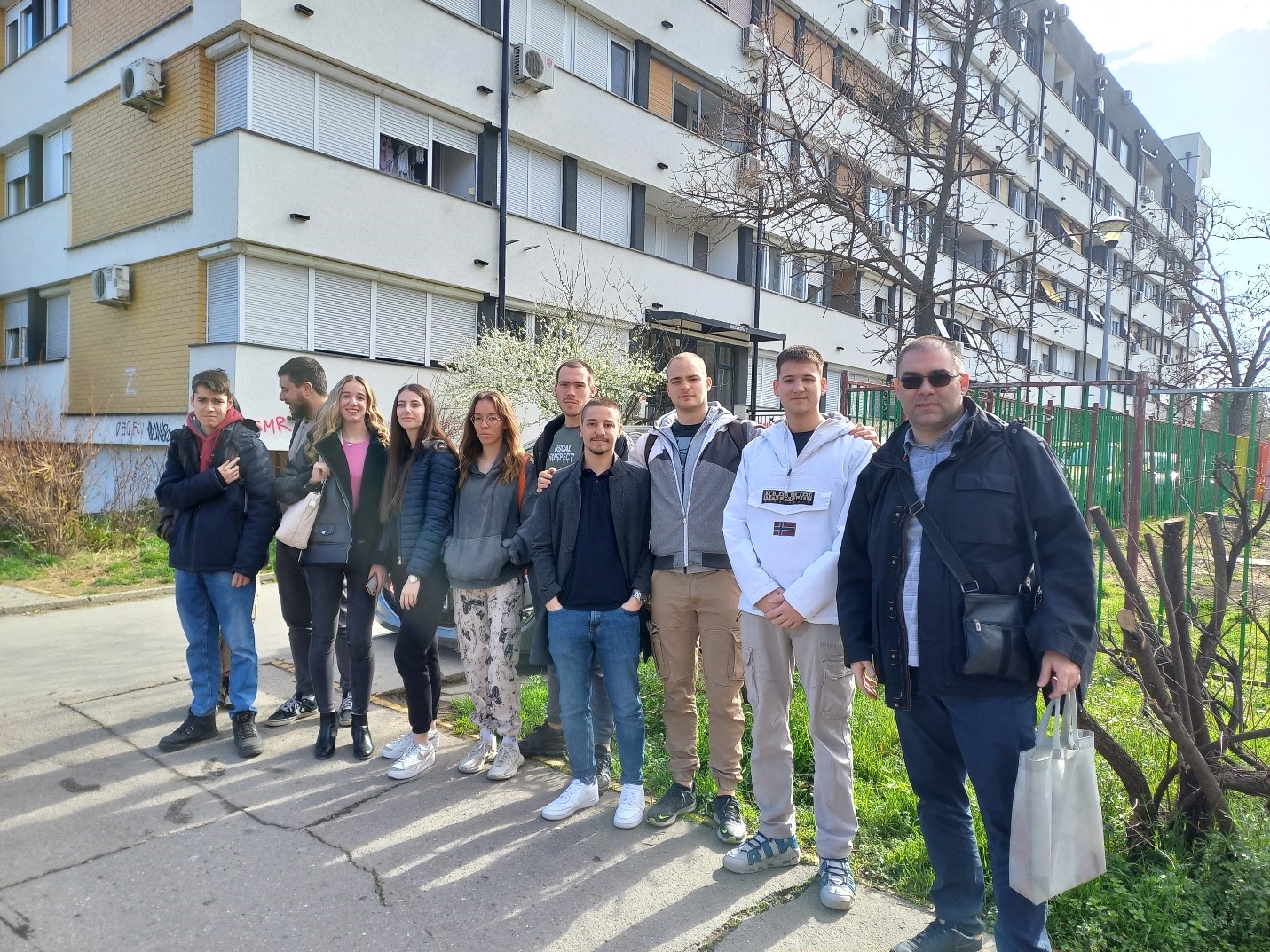As part of the three-year Erasmus+ project Strategic Partnerships in Higher Education – Intelligent Methods for Structures, Elements and Materials (acronym: IM4StEM), data collection for buildings in Novi Sad was carried out in the period from 27 November 2023. – 30 November 2023.
Students from the Faculty of Technical Sciences of the University of Novi Sad participated in this activity, namely students from the first year of the Master’s programme in Civil Engineering and students from the second and fourth year of the undergraduate programme in Disaster Risk Management and Fire Safety. Sixteen students were present in the field. The data collection on buildings was conducted under the supervision of two professors from the University of Novi Sad, Prof Danijel Kukaras, Ph.D., and Assoc. Prof Borko Bulajić, Ph.D., and two professors from the University of Osijek, Prof Silva Lozančić, Ph.D., and Prof Marijana Hadzima-Nyarko, Ph.D..
From an architectural point of view, Novi Sad is a city like any other in Central Europe. The revolution of 1848–1849 almost destroyed the city, so 19th century architecture predominates in the city centre. The city centre used to be surrounded by small, older houses, but modern multi-storey buildings are beginning to take their place.
During the socialist era, new city blocks with large streets and multi-storey buildings were built
around the city centre. There are about fifty apartment blocks with ten or more storeys; the remaining buildings generally have three to six storeys. Important transport links were created between 1962 and 1964 when a new boulevard, the “Bulevar Oslobođenja”, was built through the older parts of the city. The predominantly radial layout of the old town was replaced by an orthogonal network formed by the construction of several other boulevards in a similar way. These measures enabled the unhindered growth of the city, whose population has almost tripled since the 1950s.
Several areas in the city were selected for data collection in order to capture a range of different architectural styles. Salajka, Podbara, Rotkvarija and Stari Grad (Old Town) are some of the
oldest neighbourhoods in the city. After the Second World War, tall apartment blocks were built to cope with the massive influx of people from the countryside. In the 1950s and 1960s, many historic houses in Rotkvarija and other neighbourhoods in the city centre were demolished and replaced by multi-storey buildings. The new neighbourhoods that emerged from the fields and forests around the city centre include Liman, Detelinara and Bistrica. Liman and Novo Naselje are neighbourhoods that were built in the 1960s, 1970s and 1980s. They have wide boulevards and modern architecture. In the early 1960s, construction of new multi-storey buildings began in Liman I, and the construction of the settlement continued over time in several phases (Liman II, Liman III, Liman IV). The university campus of Liman I was built first, while the construction of Liman IV continued until the late 1990s.
After the economic crisis and sanctions in the 1990s, construction activity in Liman slowed down
and only a few notable building projects and reconstructions were carried out in the 2000s and
2010s. In the last ten years, the development of the city has increased significantly, which has
completely changed some neighbourhoods, especially Grbavica. Furthermore, Sremska Kamenica and Petrovaradin, which are located on the right bank of the Danube (in contrast to the rest of Novi Sad, which is on the left bank), used to be separate settlements/towns, but are now part of Novi Sad
